Many thanks to Richard Wugang of Sophia Electric for taking time to write about the history of the 45 vacuum tube for us here at Jeff's Place in this Part 1 post.
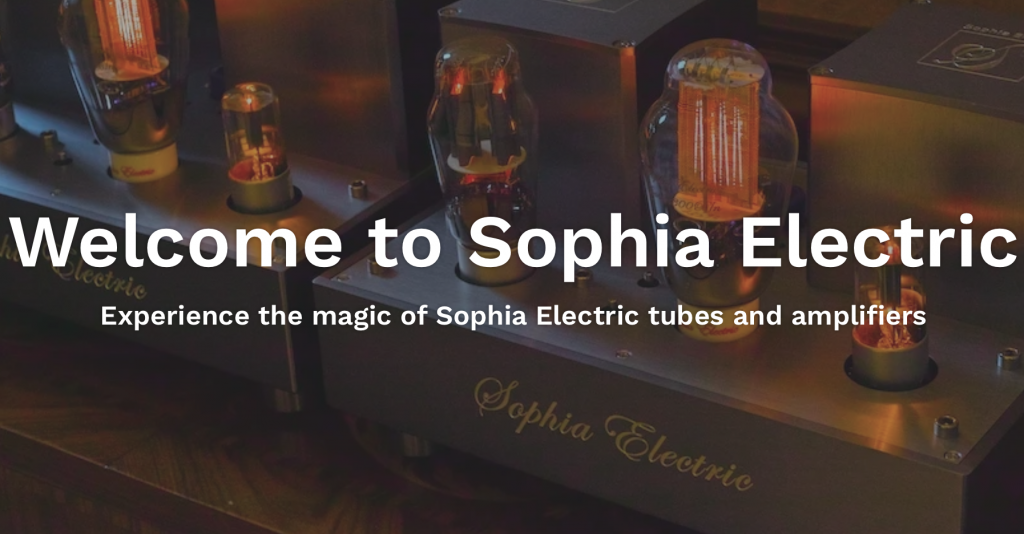
There will be more to come from Richard specifically about the design of his Sophia Electric 45 mesh plate tubes in Part 2.
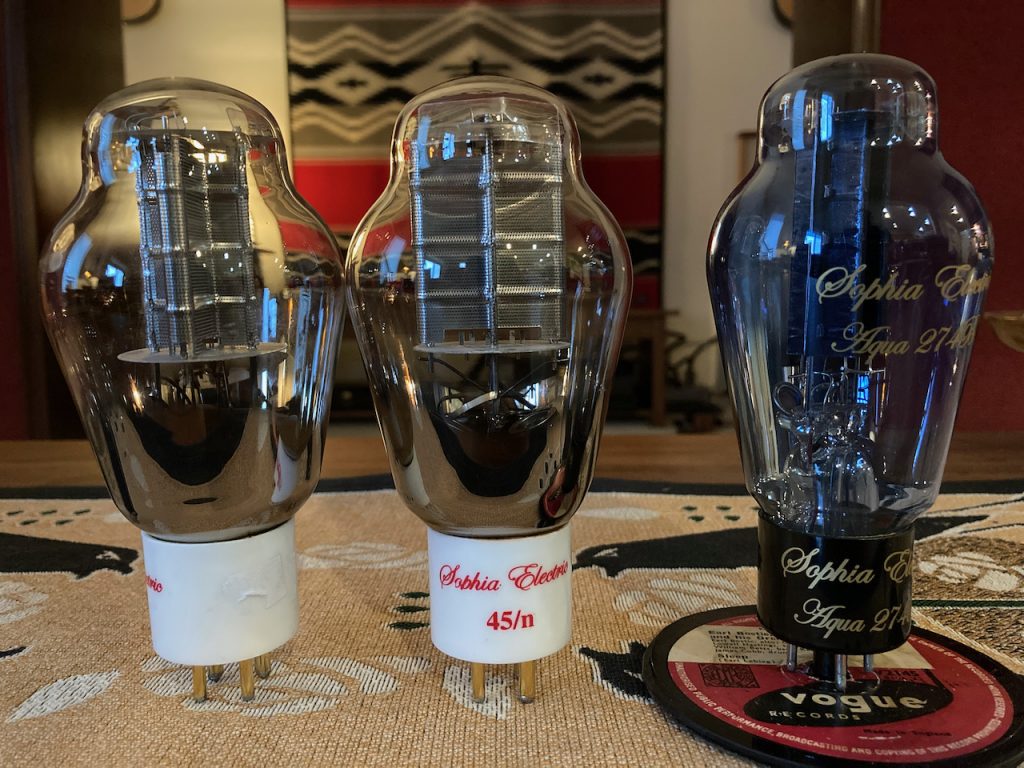
Sophia Electric mesh plate 45 power tubes and 274B Aqua rectifier.
As you would expect, Richard is extremely knowledgeable about vacuum tube history and design as a vacuum tube manufacturer, and I truly appreciate Richard sharing his knowledge with us here at Jeff's Place and Positive Feedback.
I always enjoy reading what Richard has to say about vacuum tubes, and I always learn something new!
Richard and Sue provided a pair of their Sophia Electric 45 mesh plate tubes and an Aqua 274B rectifier for me to try in the Triode Lab 45 EVO SET integrated amplifier that is here for now for review - thank you Richard and Sue!
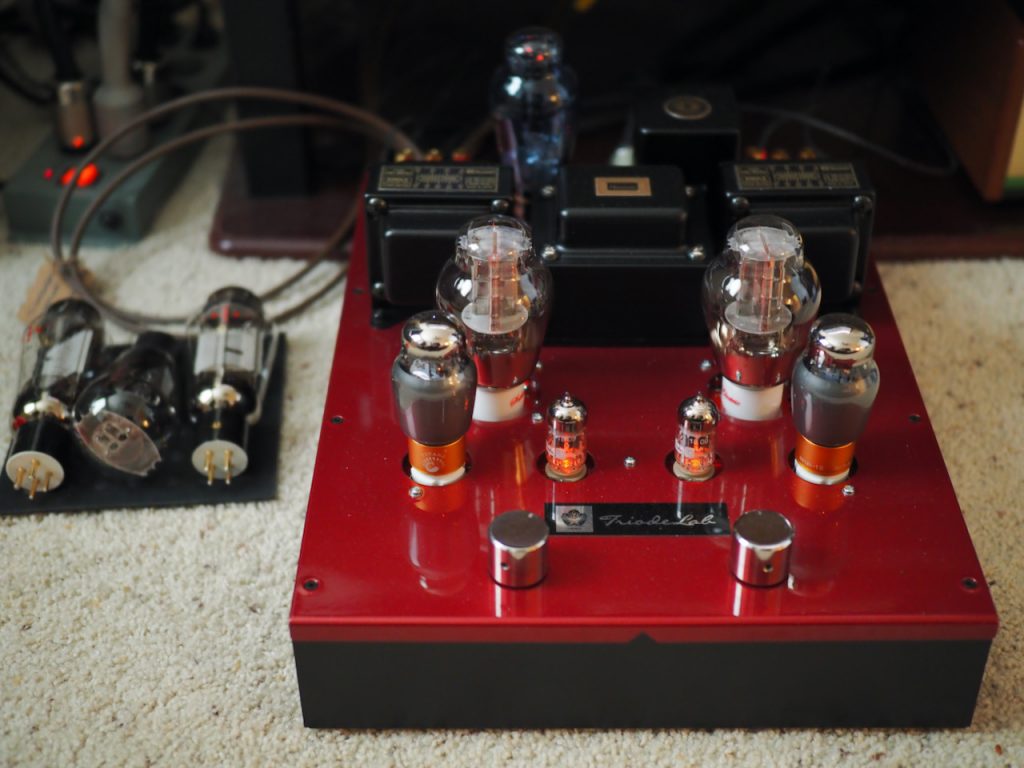
Triode Lab 45 EVO SET integrated amplifier with Sophia Electric 45 mesh plate and Aqua 274B vacuum tubes.
You'll be reading more about the performance of the Sophia Electric 45 mesh plate tubes and Aqua 274B rectifier in the Triode Lab 45 EVO SET integrated amplifier in the not too distant future here at Jeff's Place, as well as in a feature article about the Sophia Electric 45 mesh plate tubes and Aqua 274B rectifier for Positive Feedback at some point in the future.
In the meantime, please enjoy reading about what Richard has to say about 45 tubes!
"Dear Jeff:
"Thanks for your writing on vacuum tubes and its related historical stories. Reading your article made me think of some other interesting historical stories about vacuum tubes I would like to share.
"First, let’s figure out the timeline. Before we arrived in this digital age with silicon chip amplifications, we were in analog chip amplifications (1980’s to 1990’s). Prior to that was the discreet transistor age (late 1950’s to 1970’s) and the vacuum tube era (1920’s to 1950’s). During the1920’s to 1950’s, we used vacuum tube for almost everything tech related. The center piece of technology was vacuum tubes, much like silicon chips we have today.
"So, what is a vacuum tube? Who invented it then?
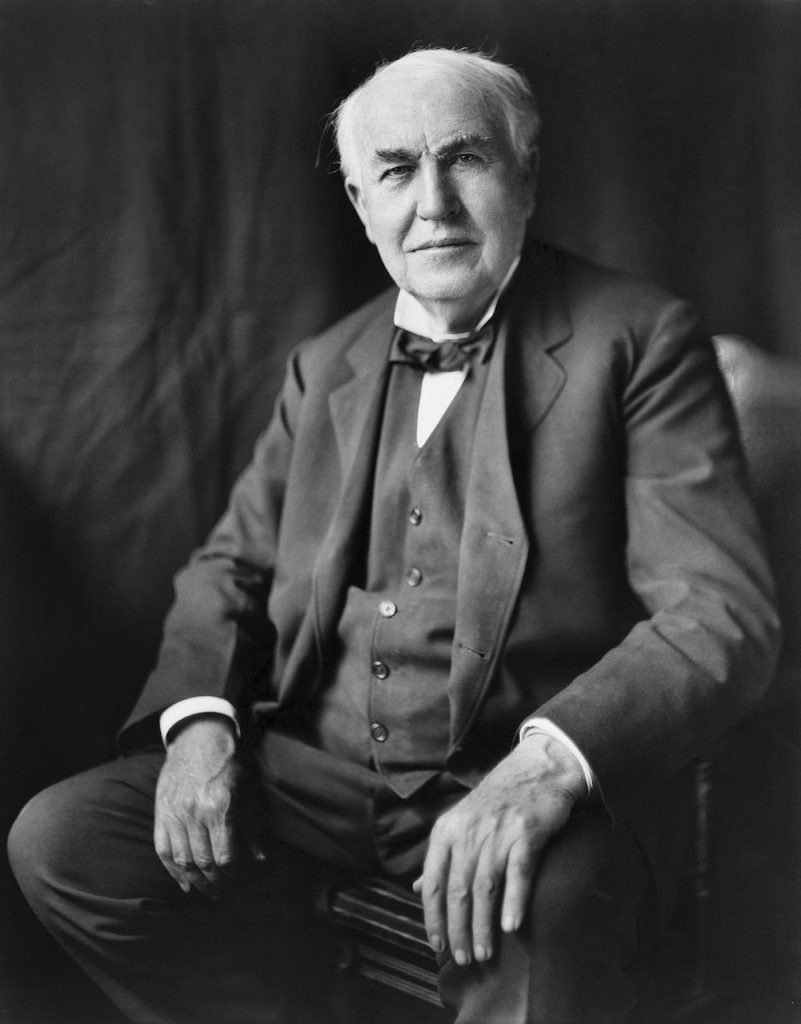
Thomas Edison. Public domain photo courtesy of Wikipedia.
"Before the vacuum tube’s debut, Thomas Edison laid the groundwork with his light bulb, more specifically the hot filament that would emit out electrons towards a metal plate in the vacuum
state. However, Thomas Edison was more interested in the proportion of the electrons; in other words, the sensitivity rather than amplification, detection, or rectification that vacuum tubes later relied on.
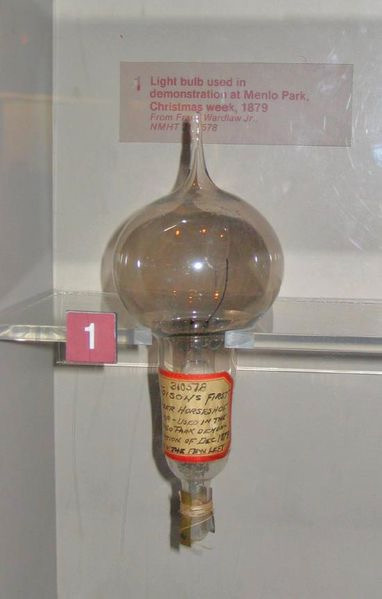
1879 Edison light bulb. Photo courtesy of Wikipedia GNU Free Documentation License.
"In 1904, John Ambrose Flemming discovered the one directional character of the Edison light
bulb experiment, paving the way for a new vacuum tube device known as a diode. Diodes soon found their way to be used in trans-Atlantic shipping wireless reception to replace the older cat whisker crystal radio detector.
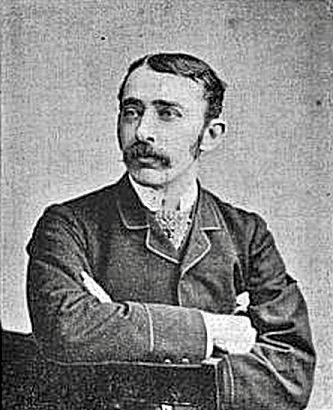
John Ambrose Fleming. Public domain photo courtesy of Wikipedia.
"In 1906, Lee de Forest invented the Audion tube - later on called the triode. It was an improvement on the 'Fleming Valve’ tube which was a diode. At this time, the vacuum tube had gained its ability to have gain in amplification.
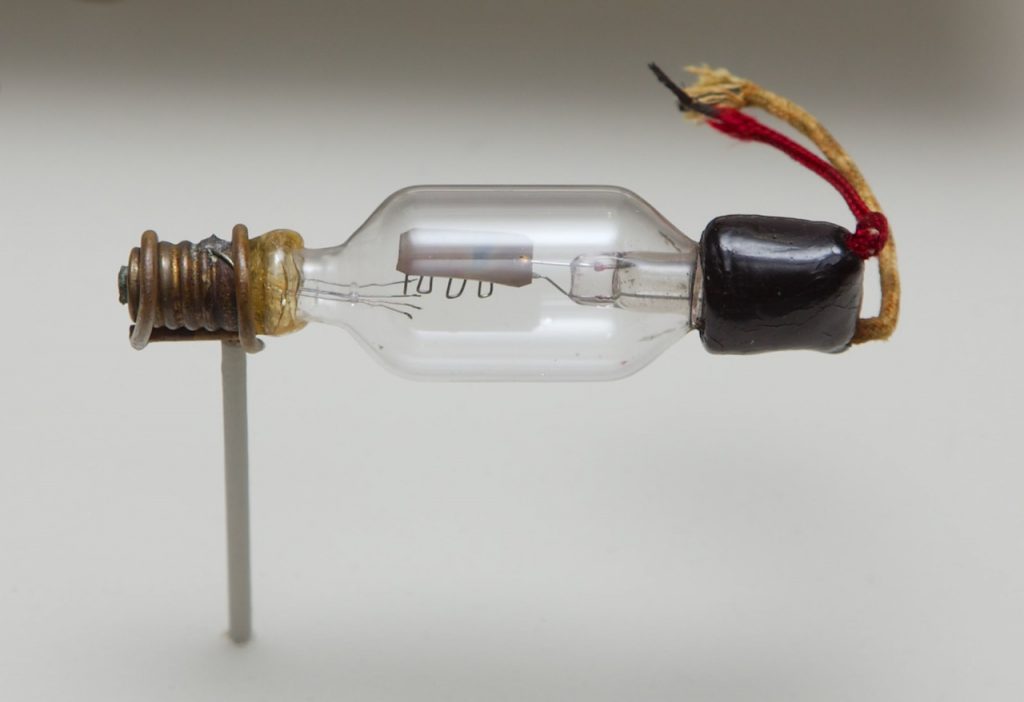
Photo by Gregory F. Maxwell, uploaded to Wikipedia for use under the GNU Free Documentation License.
"Early tubes used the filament as the cathode; this is called a "directly heated" tube. Direct heated tubes have their advantages as they had simple, higher efficiency compared to the later indirected tubes that debuted in the 1910’s.
A side note: the later 45 tube, 2A3 tube and 300B tubes are all direct heated tubes, while El34 and KT88 are indirect heated tubes.
"GE, WE and RCA are among the earliest companies that put tubes into commercial production. At the time, the initial vacuum tube technology was considered high tech and thus super expensive. The RCA company sold about 1.25 million receiving valves or tubes in 1922, but by 1924 this has risen to 11.35 million, showing the tremendous growth and popularity nonetheless.
"I have access to two of the earliest RCA tube publications. The receiving tube manual published in late 1920’s had all the early tubes in the order of numbering from 001A to number 80. Below photo is A typical RCA tube manual sheet.

"The 45 tube is a direct heated power triode tube. The early 45 tube versions were called the UX245 or CX- 345, and belongs to one of the early vacuum tube models from the 1920’s.
"For reference, the more commonly seen audiophile 300B tubes first debuted in 1930s as the Western Electric 300A.
"The earliest RCA 2A3 of late 1920’s was basically two 45 tubes built into one glass tube in a parallel connection. The single plate RCA 2A3 has the double size of a 45 tube in the plate area.
"The basic characteristic of a 45 tube is that this tube can be heated by DC or AC at 2.5V with filament current of 1.5A by applying 250V or 275V max at plate and biasing at -50 to -56 volts. It would allow a plate current of 34-36ma with a plate load (transformer) of 4-5K ohm to output 1.6-2W of power.
"In a two tubes push-pull circuit in class B operation mode, the power can be multiple times higher of the class A single ended circuit. It may sound like flea power today; however, it was earthshaking high power in the early days of tube amplification.
"Western Electric, years later, would power an entire cinema with only mono 5W from a single ended 300B tube amplifier. (Stereo was not invented just yet as the stereo only became possible in the mid-1950’s).
"Compared to the tubes on the market, namely tube model 10 and 171A (now known as the 71A today), when the 45 tube debuted, the 45 tube excelled in greater efficiency to deliver more power with about similar plate voltage. My father DWU and I got to know the 45 tube through servicing Victor high end radio console tube radio amplifiers.
"Side-note: That victor amplifier still shows up at auction site from time to time. However, do not jump on it yet; even though you can restore it to make it work, as the output transformers from the 1920’s surely have a very limited bandwidth because the source of music back then would only extend to 6K or so, as if from old telephones or acoustic gramophones, much worse than the sonics from postwar AM radio 2-3 decades later.
"Why the 45 tube?
"For the very modest power output, the 45 would have been forgotten. However, one outstanding strength has made audiophiles rediscover it decades later. The sound from 45 tube is simply pure, seductive, and even magical! Anything good that can be said about 300B tube, well, the 45 can do better, with only one limitation of 2W output, versus 3.5-4W from 2A3, and 8W from a single-ended 300B.
"If you have speakers efficient enough to utilize 2W of power output, then you can forget about any other fancy tube. However, 99% of us can’t, and thus the 300B still rules the land of tube audio with 4x more power and dynamic headroom than a smaller 45 tube.
"As a result, the little humble 45 tube joined the rank of direct heated triode bandwagon to be known once again in 1990’s. Sophia Electric had many prototype amps and custom amps utilizing the 45 as a driver tube to drive more powerful tubes such as the 300B, 845, and 212."
Richard Wugang
Many thanks to Richard for sharing with us about the origins of the 45 tube, and I shall look forward to hearing more about Richard's design of the Sophia Electric 45 mesh plate vacuum tube in Part 2!
As always, thanks for stopping by, and may the tone be with you!



























